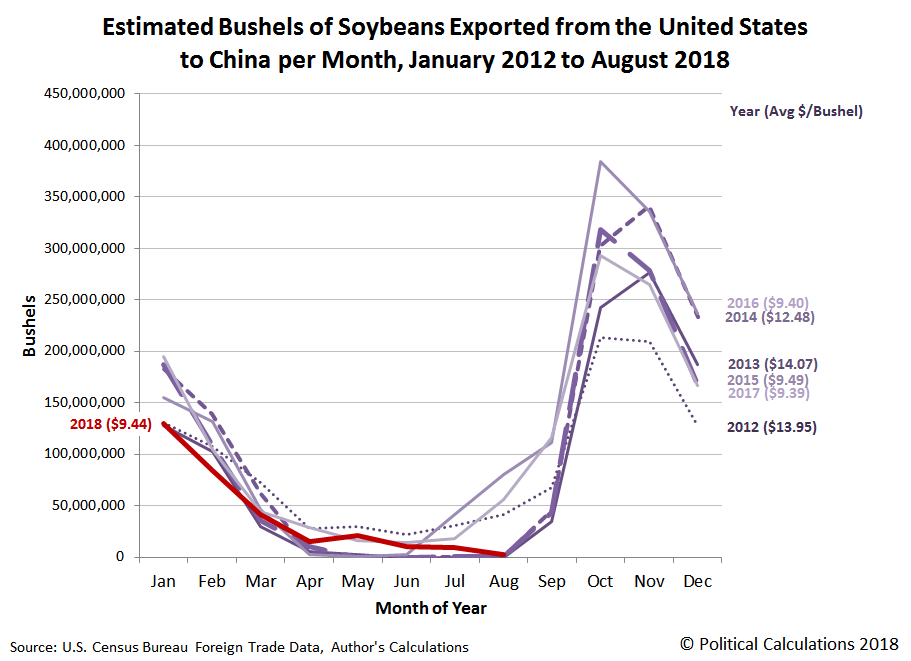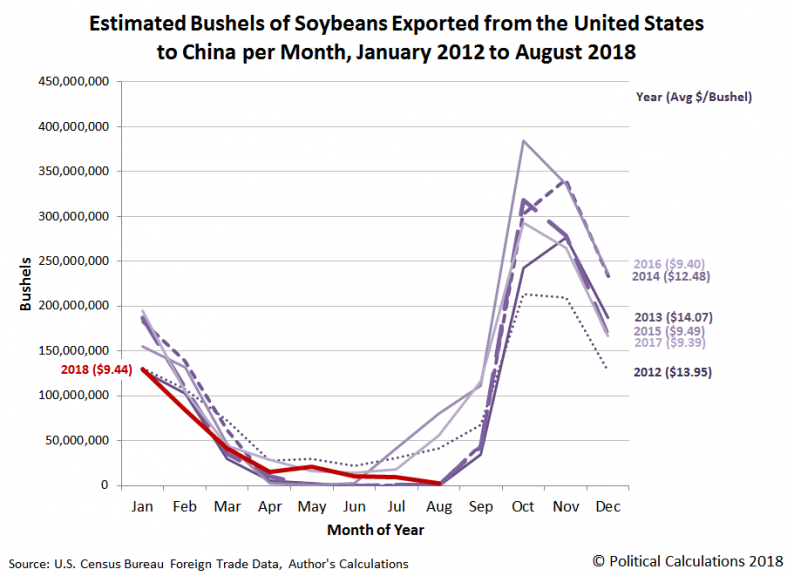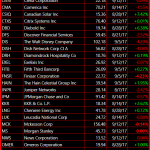Ken Roberts analyzes import-export data over at Forbes, and when the U.S. trade data for August 2018 came out, he quickly found that there were some serious shenanigans going on with U.S. soybean exports, starting with a major year over year decline for shipments to China.
In U.S. Census Bureau data released Friday, China’s percentage of U.S. soybean exports fell to less than 2% for the month of August. In and of itself that is a stunning and precipitous decline, even with 25% tariffs in place. What that means is that U.S. exports to China for the month are down 94.75% from the same month a year ago. China, which ranked No. 1 a year ago, now ranks No. 18 as a buyer of U.S. soybeans.
Historically, very low levels of U.S. soybean exports to China in the month of August is not unprecedented. The following chart shows our estimate of the monthly quantity of soybeans exported from the U.S. to China from January 2012 through August 2018, where we find that soybean shipments in 2013, 2014 and 2015 were also very low.

But the evidence of soybean shenanigans is to be found in the volume of shipments from the U.S. to the rest of the world.
But wait. Here’s what makes me wonder what is going on: U.S. soybean exports are increasing this year, not decreasing, as you might expect. Not only in value but in tonnage as well. (So it’s not a pricing fluctuation issue.)
So, what’s happening?
Since we have the data, let’s show how U.S. monthly soybean shipments to the rest of the world has evolved over the same period of time as our first chart.

2018 is seeing a dramatic shift in the destination of U.S.-produced soybeans, where an unprecedented increase in exports to the rest of the world has been taking place since the end of April 2018.
But where else in the world are those soybeans going?
Previously, when we dug into the U.S. trade data, we found destinations that included places like Egypt, Mexico, Pakistan, and the Netherlands were the international leaders, so when we looked at the data for August 2018, we were expecting to see these same countries ranking near the top of the list.














Leave A Comment